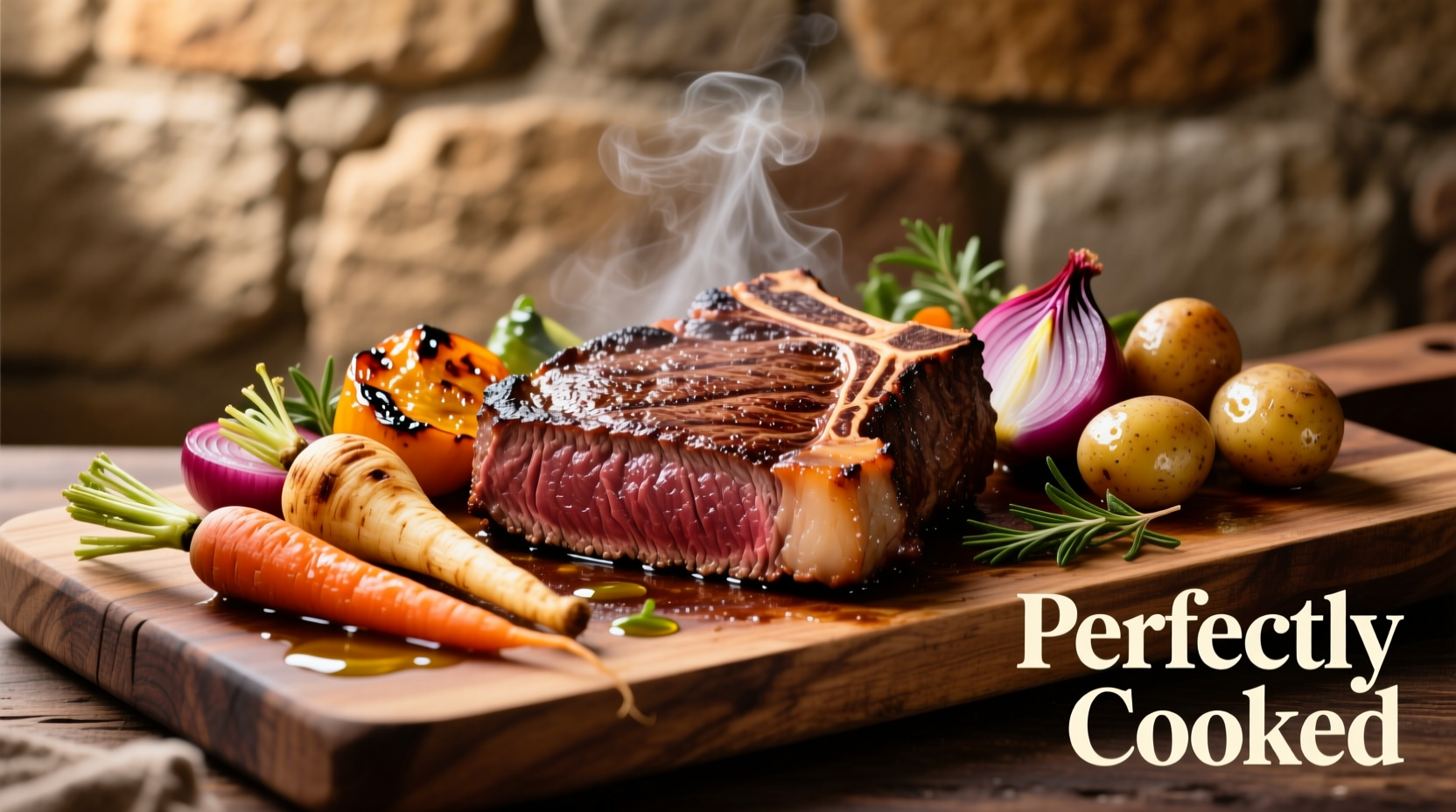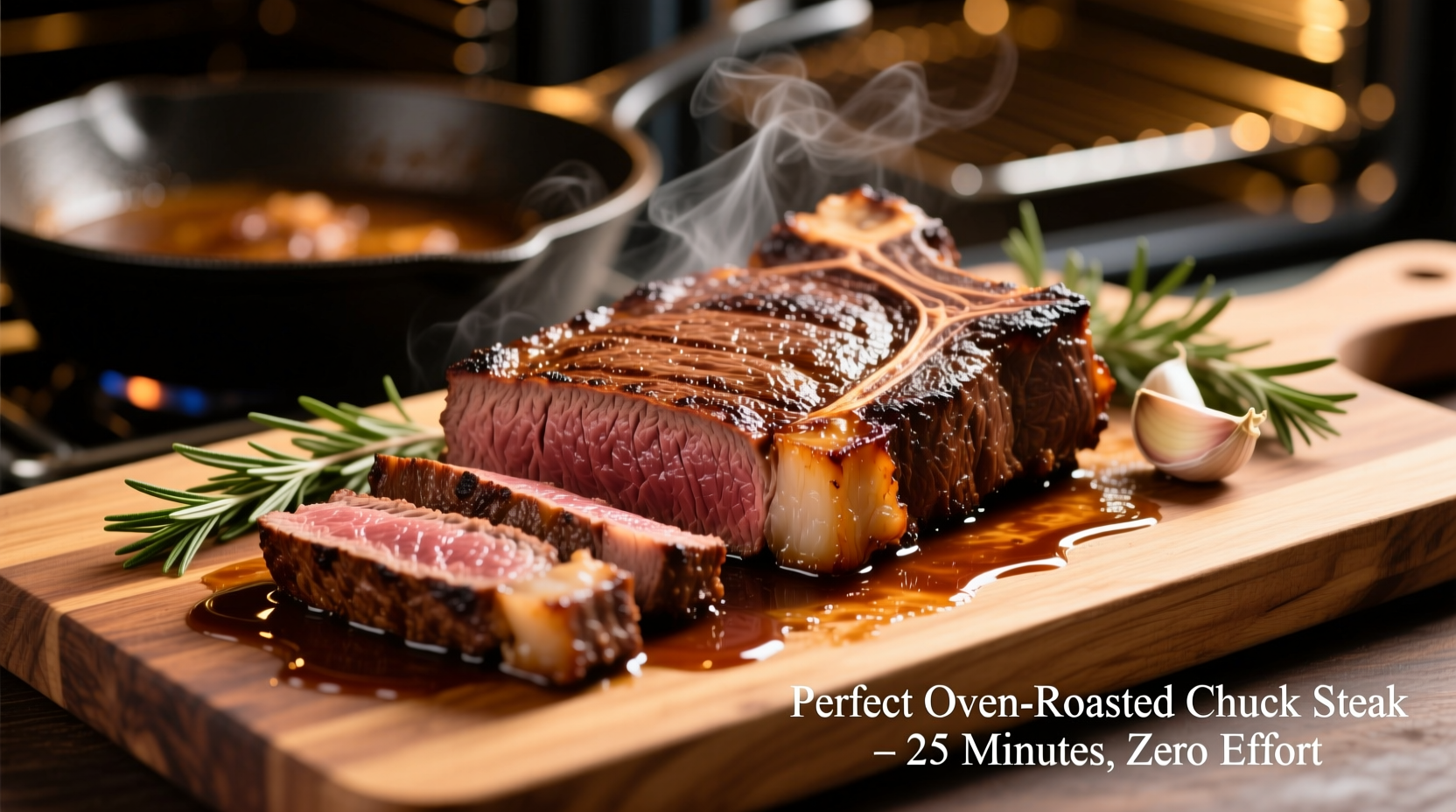Chuck steak often gets overlooked as a tough cut, but when cooked properly in the oven, it transforms into one of the most flavorful and tender beef experiences you can create at home. This guide reveals the professional technique that turns this affordable cut into a showstopper dinner, saving you from dry, chewy results that send most home cooks running back to filet mignon.
Why Chuck Steak Deserves Your Oven Attention
Chuck steak comes from the shoulder region of the cow, making it rich in marbling and connective tissue. While this might sound like a drawback, it's actually the secret to incredible flavor when cooked properly. The collagen in chuck steak melts during slow cooking, basting the meat from within and creating that signature 'fall-apart' tenderness that makes pot roast so beloved.
Unlike leaner cuts that dry out in the oven, chuck steak thrives with slow, moist heat. The American Meat Science Association confirms that cuts with higher connective tissue content like chuck respond best to low-and-slow cooking methods that allow collagen to convert to gelatin at temperatures between 160-205°F (71-96°C).

Your Essential Chuck Steak Preparation Checklist
Before your chuck steak ever touches heat, proper preparation makes the difference between good and extraordinary results. Follow these critical steps:
- Dry brine overnight: Generously salt the steak 12-24 hours before cooking and refrigerate uncovered. This draws out moisture initially, then allows the salt to be reabsorbed, seasoning deeply and improving moisture retention.
- Bring to room temperature: Remove from refrigerator 1-2 hours before cooking. Cooking cold meat leads to uneven results.
- Pat thoroughly dry: Moisture is the enemy of proper searing. Use paper towels to dry the surface completely.
- Season strategically: After drying, apply your seasoning blend (see recommended mix below).
The Perfect Oven Method: Step-by-Step
Step 1: Sear for Flavor Foundation
Preheat your oven to 325°F (163°C). While it heats, heat 2 tablespoons of high-smoke point oil (avocado or grapeseed) in an oven-safe heavy skillet over medium-high heat until shimmering. Sear the chuck steak for 3-4 minutes per side until a deep brown crust forms. This Maillard reaction creates complex flavor compounds essential for delicious results.
Step 2: Create Your Flavor Base
Remove the steak temporarily. Add 1 diced onion, 2 minced garlic cloves, and 1 diced carrot to the same skillet. Cook until softened (about 5 minutes), scraping up the flavorful browned bits from the sear. Add 1 cup beef broth, 2 tablespoons tomato paste, and your chosen herbs.
Step 3: Slow Roast to Perfection
Return the seared chuck steak to the skillet, nestling it into the vegetables and liquid. Transfer the skillet to your preheated oven. Cook uncovered for 2-2.5 hours, basting every 30 minutes, until the internal temperature reaches your desired doneness.
| Doneness Level | Internal Temperature | Resting Time | Texture Description |
|---|---|---|---|
| Medium-Rare | 130-135°F (54-57°C) | 15 minutes | Juicy with slight resistance |
| Medium | 140-145°F (60-63°C) | 15-20 minutes | Warm pink center, tender |
| Medium-Well | 150-155°F (66-68°C) | 20 minutes | Slightly pink, very tender |
| Well-Done | 160°F+ (71°C+) | 20-25 minutes | No pink, shreddable texture |
Step 4: The Critical Resting Period
Remove the chuck steak from the oven and transfer to a cutting board. Tent loosely with foil and rest for 15-20 minutes. During this time, the internal temperature will rise 5-10 degrees (carryover cooking), and the muscle fibers will relax, redistributing juices throughout the meat. Skipping this step causes precious juices to flood out when you cut, leaving you with dry steak.
Proven Flavor Enhancements for Chuck Steak
While chuck steak shines with simple preparation, these tested additions elevate your results:
- Acid balance: Add 2 tablespoons red wine vinegar or balsamic vinegar during the last 30 minutes of cooking to cut through richness
- Umami boost: Include 2-3 dried shiitake mushrooms in your cooking liquid
- Herb bouquet: Tie together 4 sprigs fresh thyme, 2 rosemary sprigs, and 2 bay leaves with kitchen twine
- Vegetable pairing: Add whole baby potatoes and carrots during the last 60 minutes of cooking
When Oven Cooking Isn't Your Best Option
While oven roasting works beautifully for chuck steak, certain situations call for alternative approaches:
- Thin cuts (under 1 inch): Better suited for broiling or pan-searing to prevent overcooking
- Time constraints: If you need dinner in under 45 minutes, consider blade steak (similar cut but more tender)
- Desiring shredded texture: For sandwiches or tacos, slow cooker or pressure cooker methods yield better results
- High humidity environments: In very humid climates, the oven's dry heat may not effectively render fat
The USDA Food Safety and Inspection Service recommends cooking beef to a minimum internal temperature of 145°F (63°C) followed by a 3-minute rest for safety, though many chefs prefer slightly lower temperatures for premium cuts like chuck when properly handled. Always use a reliable instant-read thermometer for accuracy.
Troubleshooting Common Chuck Steak Issues
Dry Results
If your chuck steak turns out dry despite following instructions, you've likely overcooked it or skipped the resting period. Chuck steak requires precise temperature monitoring - it's not a cut that forgives significant overcooking. Next time, remove it from the oven at 125°F (52°C) for medium-rare, as carryover cooking will bring it to 135°F (57°C).
Tough Texture
Toughness usually indicates insufficient cooking time or temperature. The collagen needs adequate time to convert to gelatin. If your chuck steak is tough, return it to the oven with additional liquid and cook for another 30-45 minutes, checking tenderness every 15 minutes.
Lack of Flavor Depth
Without proper searing and aromatic vegetables, chuck steak can taste one-dimensional. Always take time for a thorough sear and build your flavor base with onions, garlic, and carrots. Adding tomato paste and cooking it until it darkens slightly creates additional flavor complexity through caramelization.
Serving and Storage Tips
For optimal tenderness, slice chuck steak against the grain using a sharp carving knife. The grain runs parallel to the long edge of the steak - cutting perpendicular to this direction shortens the muscle fibers, making each bite more tender.
Store leftovers in an airtight container with some of the cooking liquid for up to 4 days in the refrigerator. For best reheating results, warm gently in a covered dish with a splash of broth at 275°F (135°C) until heated through - never microwave, which makes meat rubbery.











 浙公网安备
33010002000092号
浙公网安备
33010002000092号 浙B2-20120091-4
浙B2-20120091-4